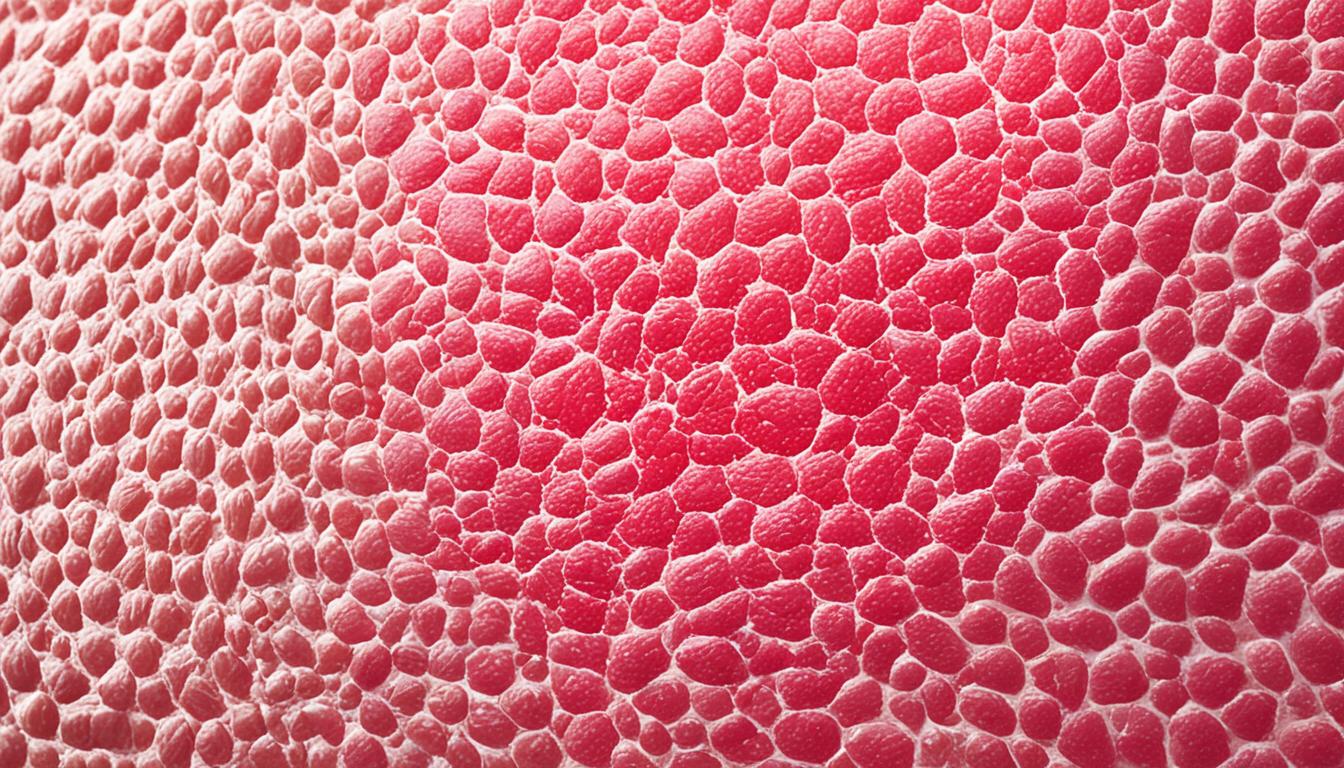Stevens-Johnson syndrome (SJS) is a rare, severe disease. It shows as painful blisters on skin and mucous membranes. It can cause severe eye problems too. SJS is mostly caused by certain drugs but also by infections. These include the cold or flu. Certain genetic issues and a weak immune system can also raise the risk.
At first, SJS feels like the flu. Then, a rash shows up and can turn into blisters or peel the skin. Fast diagnosis is very important for treatment. Usually, it means going to the hospital for care. This care aims to prevent serious complications and help you heal.
Key Takeaways:
- Stevens-Johnson syndrome is a rare but serious disease that causes painful blisters and lesions on the skin and mucous membranes.
- Adverse drug reactions and infections, along with genetic factors and a weakened immune system, can increase the risk of developing SJS.
- Early symptoms include flu-like symptoms and the development of a rash that may progress to blisters and skin peeling.
- Prompt diagnosis by a medical professional is crucial for effective treatment.
- Treatment often involves hospitalization and supportive care to prevent complications and promote healing.
Risk Factors and Symptoms of Stevens-Johnson Syndrome
Stevens-Johnson syndrome (SJS) is a rare but serious condition. It can lead to severe health problems. Knowing the risk factors and symptoms is key to getting help early.
Risk Factors
Some people are more likely to get Stevens-Johnson syndrome than others. This includes:
- People who have had bad reactions to some medicines
- Those with a weak immune system
- People with AIDS or HIV
- Those on chemotherapy
- People with a family history of SJS
If you belong to any of these groups, it’s crucial to be alert. Early recognition and managing the problem are vital.
Symptoms of Stevens-Johnson Syndrome
It’s important to spot SJS symptoms early for quick medical help. At first, they might seem like the flu with fever and tiredness. But soon, a unique rash shows up. This can turn into painful blisters and skin that comes off.
SJS can also harm the eyes. This might show as eye redness, pain, or trouble with bright lights.
Finding these signs early is important. It means you can get immediate medical support.
Diagnosing and Treating Stevens-Johnson Syndrome
Finding out if someone has Stevens-Johnson syndrome (SJS) involves looking at their medical history and doing a physical exam. A skin biopsy might also be done to make sure of the diagnosis.
If SJS is suspected, getting medical help fast is very important. The person usually needs to go to the hospital, sometimes to the intensive care or burn unit. They need special care and close watching.
The first thing to do for SJS is to stop the medicine that might be causing it. If it’s because of an infection, that infection must be treated. Stopping the harm helps the body start to heal.
Helping with the symptoms is key in treating SJS. Keeping the body hydrated with fluids is important. The skin needs careful treatment to avoid infections and help it heal. The eyes also need special care to stop problems that might cause vision loss.
Getting the correct treatment for SJS quickly can make a big difference. It helps lower symptom pain, reduce further issues, and speed up recovery.
Conclusion
Stevens-Johnson syndrome (SJS) is a serious and potentially fatal condition. It demands quick medical care. Various medicines and infections can trigger it. Early diagnosis and treatment are keys to avoid serious problems and heal.
Treating SJS includes stopping the medicines that caused it. Patients also get special care for wounds and eyes. Supportive care, like replacing fluids, fights dehydration. Wound care shields the skin and lowers infection risks. Eye care tackles inflammation and wards off problems.
The good news is most people recover from SJS with the right medical help. Yet, some may face lasting issues. This is why talking to a doctor for accurate diagnosis and care is very important.

